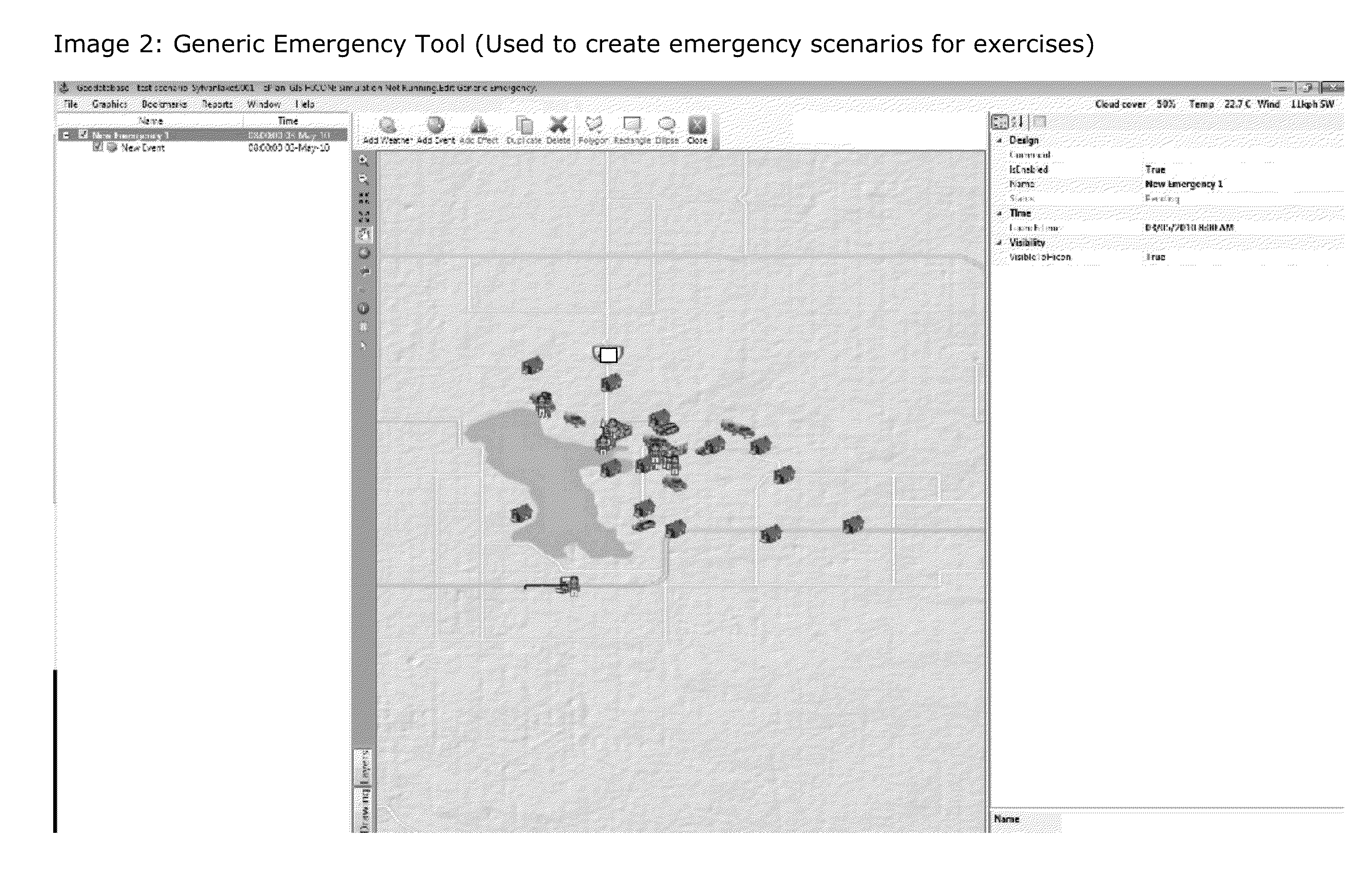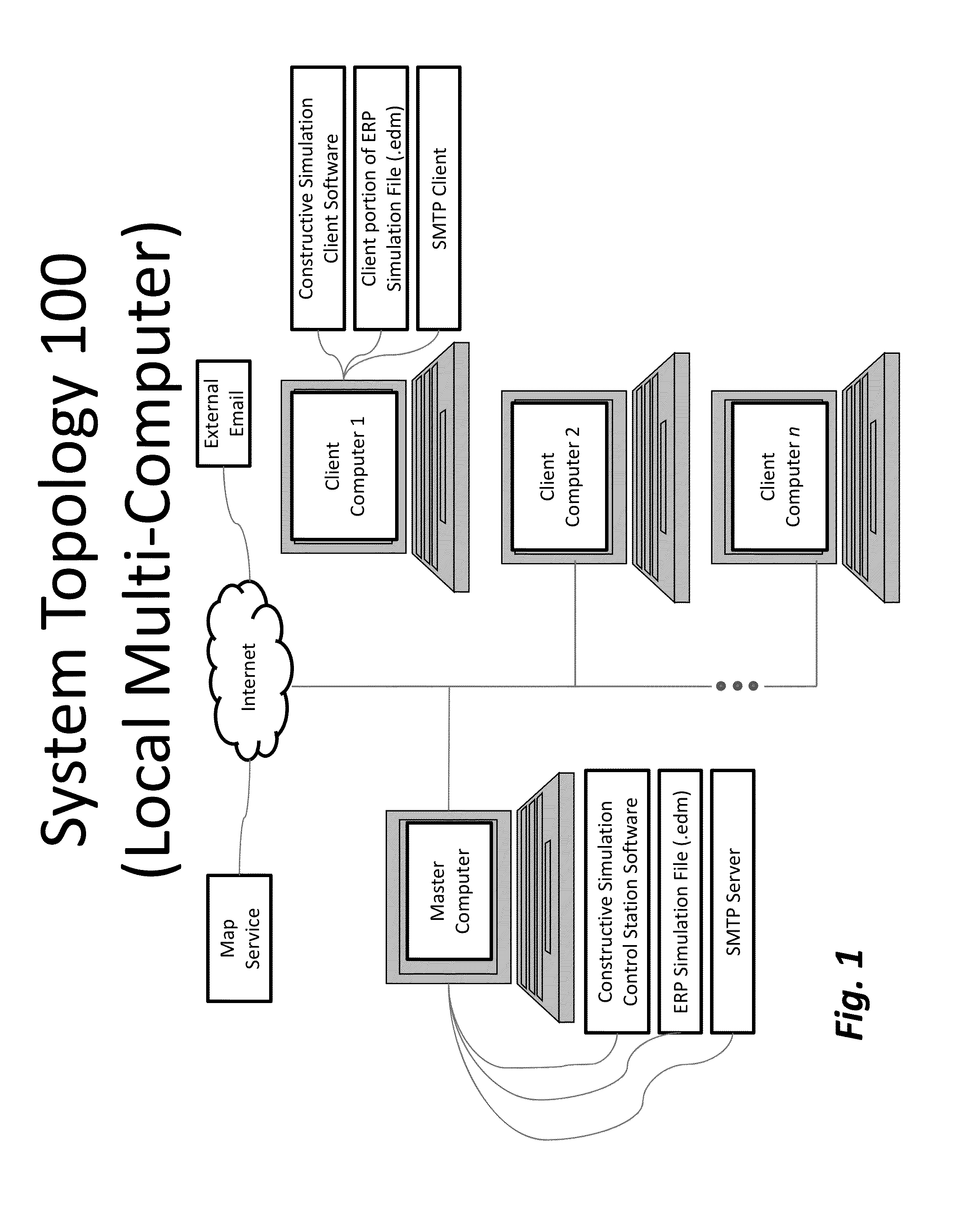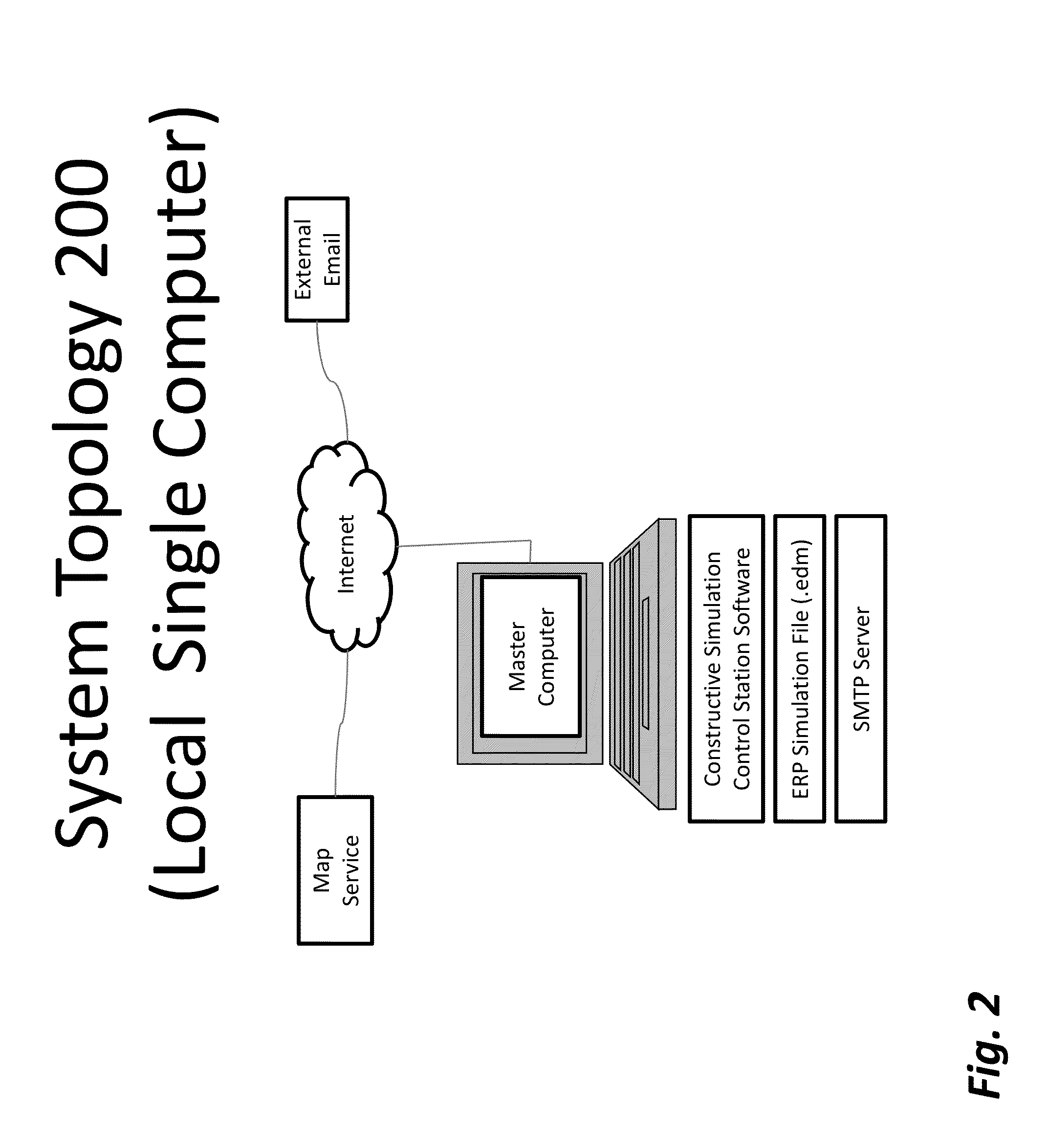System and method for dynamic simulation of emergency response plans
a dynamic simulation and emergency response technology, applied in structured data retrieval, analog computers, hybrid computing, etc., can solve problems such as difficult to understand, large binder format that is difficult to peruse and understand, and difficulty in implementing the plan. to achieve the effect of easy understanding of the plan
- Summary
- Abstract
- Description
- Claims
- Application Information
AI Technical Summary
Benefits of technology
Problems solved by technology
Method used
Image
Examples
Embodiment Construction
[0033]A system is provided for managing Emergency Response Plans (ERP) and use thereof. As shown, the system employs a local computer-based constructive simulation application (100, 200) or a server-based constructive simulation tool (300) that stores all information related to an ERP in a database (600) in a manner such that it can be visually edited (400), dynamically shown on screen (500), stored and transmitted to other users in a self-contained file format (600), and can be used in a networked exercise (550) where players can take control of assigned entities within the simulation of the ERP.
[0034]As shown in FIGS. 1, 2 and 3, a system capable of implementing the method of the invention comprises at least a master computer implementing Constructive Simulation Control Station Software, a communications interface inducing a network interface and can include an SMTP server, and a data collection and storage device for collecting data for one or more ERP characteristics. ERP charac...
PUM
 Login to View More
Login to View More Abstract
Description
Claims
Application Information
 Login to View More
Login to View More - R&D
- Intellectual Property
- Life Sciences
- Materials
- Tech Scout
- Unparalleled Data Quality
- Higher Quality Content
- 60% Fewer Hallucinations
Browse by: Latest US Patents, China's latest patents, Technical Efficacy Thesaurus, Application Domain, Technology Topic, Popular Technical Reports.
© 2025 PatSnap. All rights reserved.Legal|Privacy policy|Modern Slavery Act Transparency Statement|Sitemap|About US| Contact US: help@patsnap.com



